
The ability to be mobile, to come and to go as we please, is something that many people take for granted.
Yet, as people age, their ability to be mobile can become compromised by so many different things. For many people, this means that it is a struggle to get out and about. Others even experience difficulties getting up from chairs and moving around the home.
Why Mobility Matters So Much
The implications of mobility issues are widespread.
From the social perspective, mobility issues can cut a person off from the outside world and make it more difficult for them to find ways to interact with others.
Physically, a person with mobility issues is likely to move less.
This is bad for their physical health and can contribute to obesity and other health problems. Incontinence accidents are also more likely if mobility challenges make seniors resistant to getting up.
There are also psychological implications to mobility issues. In particular, mobility challenges can frequently leave people feeling depressed, especially if they aren’t getting much social interaction.
Helpful Mobility Aids for Seniors
Perhaps one of the biggest challenges with mobility issues is that there isn’t a single answer
That’s because it isn’t a single problem. Instead, there are many different things that can contribute to mobility issues. Some of these might be temporary while others might be permanent.
But, there are ways to make mobility issues less intrusive.
In particular, mobility products for seniors can make movement easier for seniors, often giving them back some of their independence.
In the Bathroom
Shower Chairs
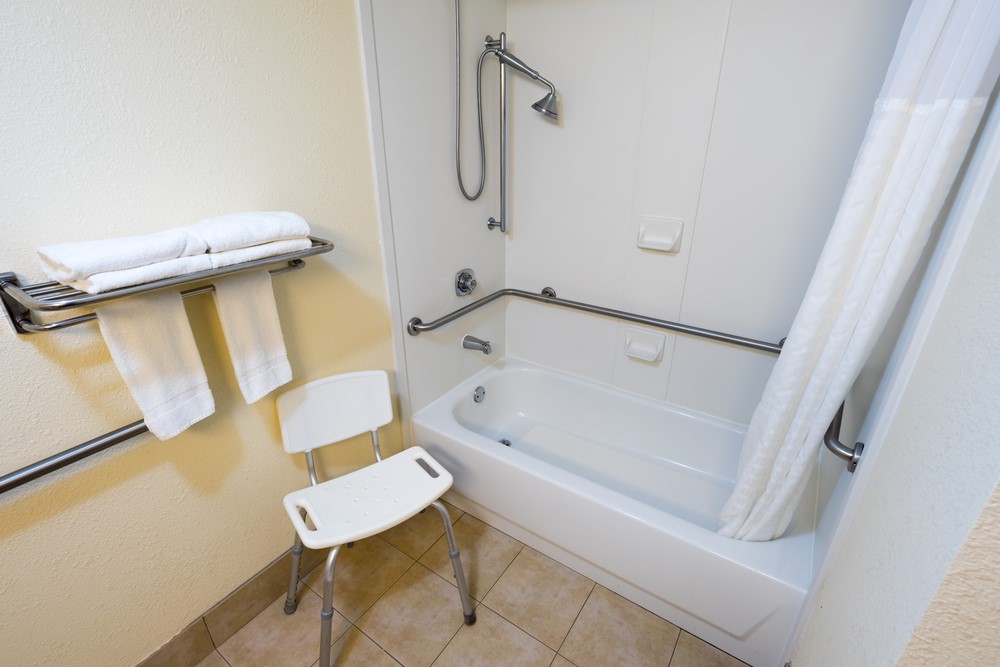
A shower chair has rubberized feet that prevent slipping and can come in various styles, including some traditional wood versions and some plastic ones instead. Some versions have aluminum legs and a durable seat that provides additional support.
The biggest benefit is that these chairs allow the senior to sit for most of the time, rather than trying to stand. This is valuable for seniors who struggle to stay on their feet. Sitting instead of standing also reduces the risk of slipping and falling.
Bathtub Transfer Benches
Also known as simply transfer benches, they are safety mobility aids for seniors that them to get safely into the bathtub with little assistance from a caregiver.
First, the caregiver adjusts the position of the transfer bench- two legs are placed outside the bathtub, and two legs are placed inside the bathtub. Next, the caregiver helps the elderly patient sit on the transfer bench and slide down in the bathtub.
Such transfer benches are is an important way to promote bathroom safety. They can even be used by relatively independent seniors, who can sit on the bench and shuffle across themselves. Doing so reduces the risk that they’ll slip and fall when trying to step into a bath and gives them somewhere to sit while washing themselves.
The appeal is easy to see, given that bathtubs need high sides to keep the water in. Stepping over the side can become increasingly difficult as the senior ages.
Raised Toilet Seats
Raised toilet seats can be attached to a regular toilet. An elevated toilet seat provides extra height, so the elderly patient doesn’t squat low. It allows the elderly patients to lower themselves into a toileting position without putting strain on the caregiver.
In simple words, the raised toilet seat allows an elderly patient to sit and stand easier. This can be a powerful approach, helping seniors to feel more confident about being in the bathroom, an effect that could even lower the risk of incontinence accidents.
Grab Bars
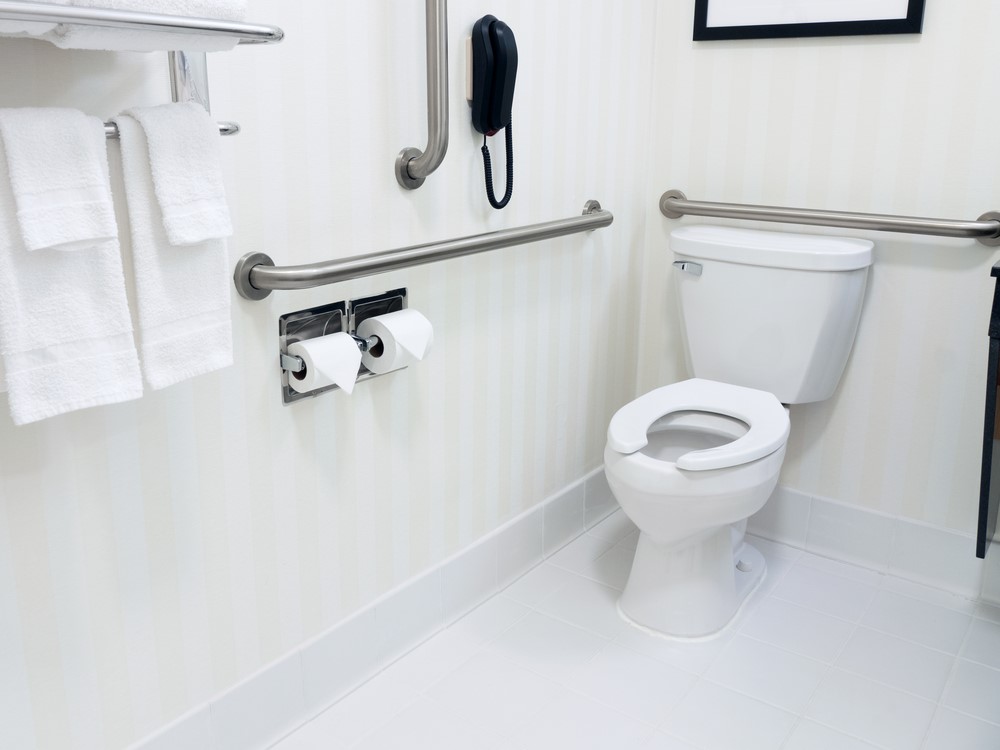
Grab bars help seniors to maintain their balance, while also helping them to stand and sit. You’ll most often use these bars in the bathroom, although they’re relevant in other places as well.
The bars come in various forms, including some that attach to the wall via suction and others that screw in instead. The screw-in versions are more secure and should be attached professionally.
Remember, the senior may be placing all of their weight on the bar, so it needs to be secure. Don’t take any chances!
Outside the Home
Walking Sticks and Canes
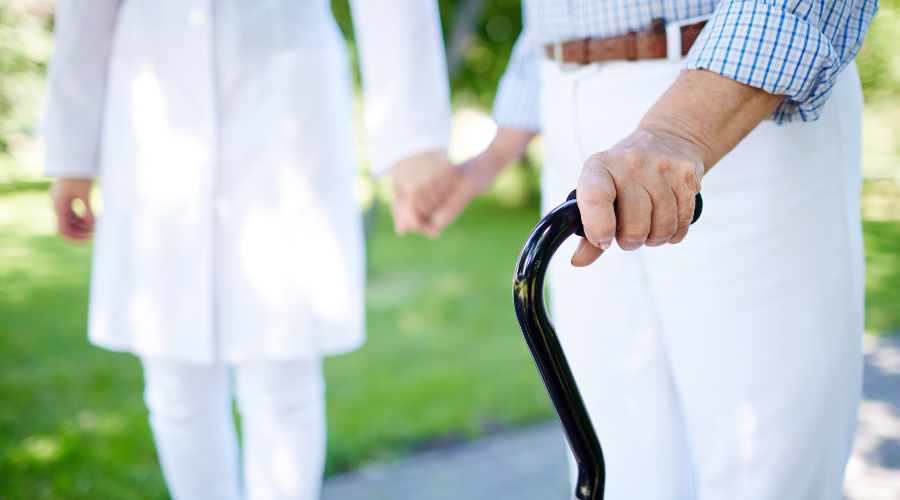
A cane is a simple yet effective mobility aid used by elderly patients and those recovering from injury or surgery. It provides support and stability while walking and can also help prevent falls.
There are various styles available, including canes with a wide base to reduce the risk of slipping. It’s important to find the right style and height for the senior’s needs.
Walkers
A walker is perhaps the most common type of mobility aid. It is a frame that surrounds the patient and provides support while walking. Walkers can be very helpful for patients who have difficulty walking or balance issues. They can also help to prevent falls.
Some versions have seats, allowing seniors to stop and take a rest regularly. This feature is fantastic for seniors who struggle to stand for long periods.
Plus, walkers mean that seniors are still moving around under their own steam. Doing so helps to keep their muscles active and promotes physical health.
Wheelchairs
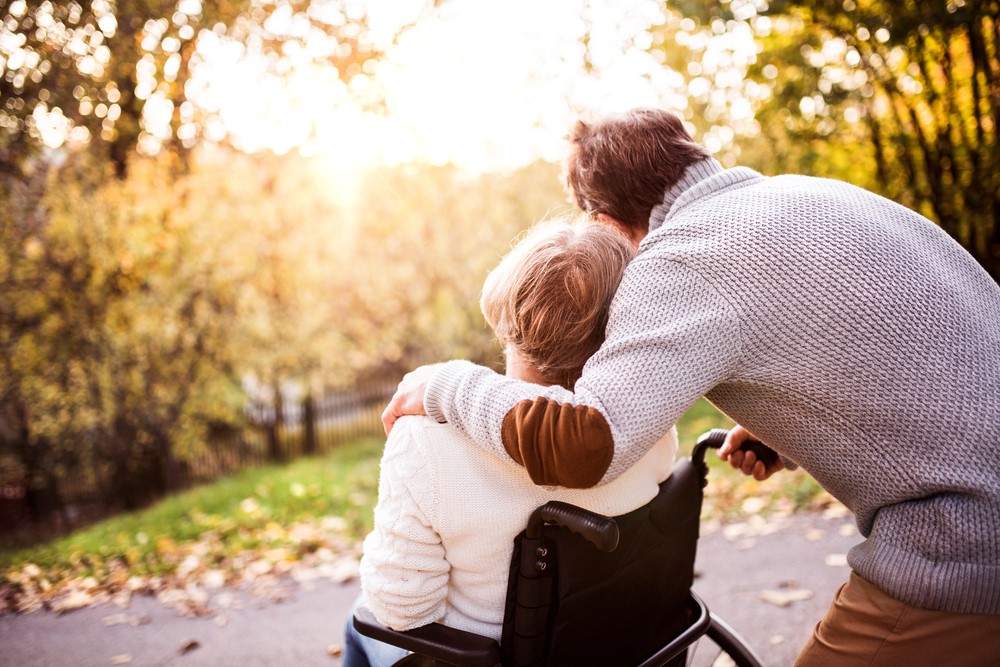
We can’t forget about wheelchairs, can we? These are typically used by seniors who can’t walk well on their own.
There are two main types of wheelchair: manual and electric. Manual wheelchairs tend to be cheaper and smaller, but they rely on either the user or a caregiver providing momentum. Electric wheelchairs work well for seniors with limited fine motor skills or who lack the strength to move the wheelchair themselves.
Regardless of the style, it’s important to find a good fit between the wheelchair and wheelchair user. This involves taking the time to research your options, including their features, strengths, and weaknesses.
Electric Scooters
Electric scooters have some of the features of an electric wheelchair, however they tend to be less maneuverable and are often designed for outdoor use.
The scooters are perfect for seniors who struggle to walk long distances, but still want to get out and moving. We actually reviewed one such scooter on this site – the Explorer-Swift High-Performance 4-Wheel Mobility Scooter and thoroughly enjoyed the experience.
Of course, that’s just one of many scooters on the market. As with wheelchairs, the goal is to find the best fit for your needs.
Other Mobility Aids
Car Grab Assist Bar
This tool does look a little odd, but it’s a clever one. It’s a car assist grab bar, and it can make getting out of a car much easier.
Of all of the tools on this page this one is the most overlooked and one of the most important. The challenge of getting into and out of a car is one of the reasons that seniors often end up going out less. A tool like this can make all the difference.
Stair Lifts
Stairlifts are mobility aids used by patients who have difficulty walking up and downstairs. They are typically installed in the patient’s home and safely transport the patient up and downstairs. They’re fantastic for improving safety, while also reducing strain on caregivers and healthcare workers.
Stairlifts are ideal for seniors who wish to age in place in a two-story family home. Going up and down stairs can get increasingly difficult and even dangerous with age, and stairlifts can make the process both easier and safer.
That said, stair lifts can be expensive to install and may not be safe for seniors with cognitive challenges. Sometimes it will be better to move the senior’s room onto the ground floor or consider moving to a single story house instead.
Transfer Boards
Transfer boards are also called sliding boards. They’re simply flat boards that are used to bridge the gap between objects. They make it easier for seniors to move from one surface to another, like between a bed and a wheelchair or between a wheelchair and a vehicle.
The boards make transfers safer and promote independence, as the senior can actively help in some parts of the transfer process.
Gait Belts
Gait belts are used to help in the transferring process. They’re worn by the care recipient and provide extra leverage for helping seniors to move. Notably, these belts reduce caregiver strain, which reduces the risk of injury.
These belts are unfamiliar to many caregivers, so it’s important to learn about them and the best techniques before using one with the care recipient.
Tools that Reduce Mobility-Related Challenges
Finally, some tools take a different approach. Instead of helping to improve mobility, they offer ways around common challenges.
Tools that Extend Reach
Various tools help to extend the senior’s range of motion. For example, reachers help seniors to pick up objects without needing to bend over, while a sock aid tool helps seniors to put a sock on while seated.
Even products as simple as a long handled shower brush can be helpful here.
Commodes and Urine Bottles
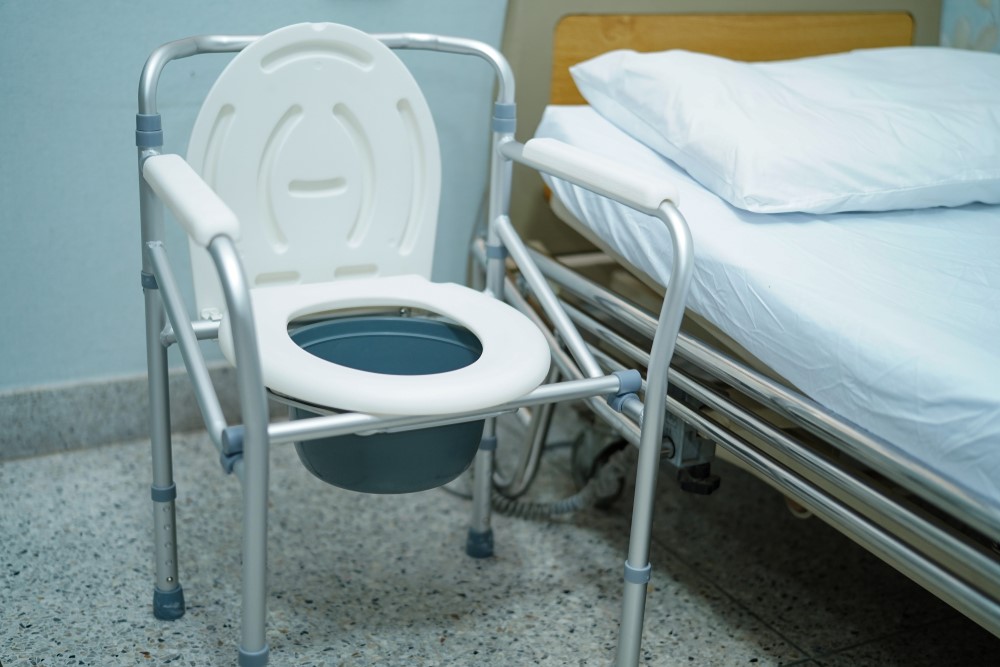
These products are alternatives to visiting the bathroom. They can be especially useful at night or in cases where the bathroom is a decent distance from the senior’s bedroom.
Commodes are the most versatile option, as they’re essentially bedside toilets that the caregiver needs to empty regularly. They often look and feel much like toilets too, making them familiar and easy to use.
Urine bottles are only useful for urine, but they still have their place. Urine bottles for men the most straightforward and some can even be used while lying down.
Bottles for women are tricker and take some getting used to.
Many, like the Loona, can be used while standing or sitting. Some wide-mouthed drink bottles can do the same trick, like these gallon water bottles. You can also find ones in the more traditional urine bottle style.
Urine bottles for women do work. They also come with a learning curve and some women will resist using them. This makes them especially unsuited to women with dementia or other cognitive challenges.
How to Spot Mobility Issues
One additional challenge for caregivers is determining when mobility problems are actually occurring for their family members. Seniors often compensate for mobility problems, which can make it harder to spot when they are occurring.
For example, if a senior finds it hard to walk a certain distance, they might just avoid walking that far and give other reasons for the decision.
Likewise, you might find that a person simply slows down their pace to adjust for the additional challenge with mobility. That isn’t a desirable approach, though, as it may indicate a gait issue, which can increase the chances of falling.
Looking for changes in a person’s walking can be a good way of spotting mobility issues early because they become a major issue.
A simple way of looking at it is whether the person can climb ten steps or walk a quarter of a mile without issue. Additionally, has the person changed how they walk or climb that distance? If so, there may be a mobility problem at play.
The answers to those questions offer key indications about mobility.
Other Ways to Improve Mobility
Mobility aids for seniors are certainly powerful, but they’re not the full story.
Seniors should also talk to their doctor about ways to improve their movement. Possible approaches could include changes to the senior’s diet, medications, or the way they move.
For example, if mobility issues were partly related to weight, the doctor might suggest dietary changes that promote weight loss. Or, perhaps an anti-inflammatory diet can be used to help with joint pain.
Physical activity might be crucial in some situations too, as inactivity tends to worsen mobility issues.
The doctor or a physical therapist might also suggest exercises that help with specific movement challenges or different ways the senior can complete a task. For example, some challenges with sitting down and standing up can be reduced by using different sitting and standing techniques.
Final Thoughts
This article has highlighted some of the best types of mobility aids for seniors, although many others out there too. Most mobility aids come in various styles and it’s important to make sure whatever you choose closely matches the senior’s needs. Try talking to their doctor as well. They may be able to steer you in the right direction and help make sure you’re using the aid correctly and safely.
With the proper mobility aid, elderly patients can maintain their independence and improve their movement, while reducing their reliance on caregivers.
When purchasing such aids, pay close attention to the vendor and any reviews. Doing so help ensure you get a high quality product, one that will withstand repeated use.
Feeling Overwhelmed?
Check out our Caregiving Consulting service for personalized support and guidance.

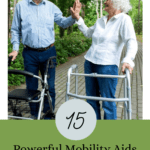
Leave a Reply